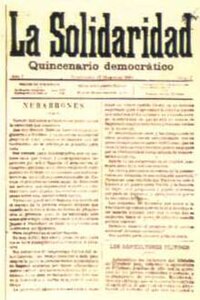Philippine literature is literature associated with the Philippines from prehistory, through its colonial legacies, and on to the present.
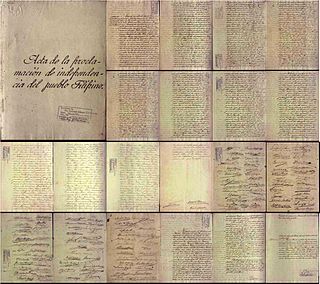
Spanish was the sole official language of the Philippines throughout its more than three centuries of Spanish rule, from the late 16th century to 1898, then a co-official language under its American rule, a status it retained after independence in 1946. Its status was initially removed in 1973 by a constitutional change, but after a few months it was once again designated an official language by a presidential decree. However, with the adoption of the present Constitution, in 1987, Spanish became designated as an auxiliary or "optional and voluntary language".
La Liga Filipina was a secret society. It was founded by José Rizal in the house of Doroteo Ongjunco at Ilaya Street, Tondo, Manila on July 3, 1892.
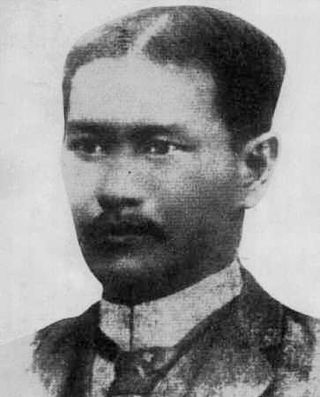
Graciano López y Jaena, commonly known as Graciano López Jaena, was a Filipino journalist, orator, reformist, and national hero who is well known for his newspaper, La Solidaridad (December 13,1888.

The Captaincy General of the Philippines was an administrative district of the Spanish Empire in Southeast Asia governed by a governor-general as a dependency of the Viceroyalty of New Spain based in Mexico City until Mexican independence when it was transferred directly to Madrid.
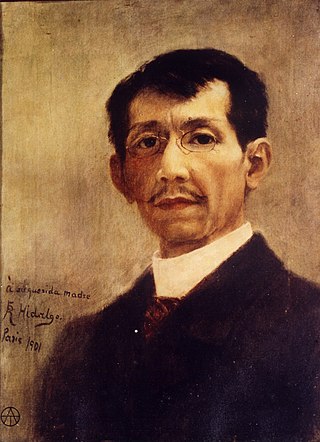
Félix Resurrección Hidalgo y Padilla was a Filipino artist. He is acknowledged as one of the greatest Filipino painters of the late 19th century, and is significant in Philippine history for having been an acquaintance and inspiration for members of the Philippine reform movement which included José Rizal, Marcelo del Pilar, Mariano Ponce, and Graciano López Jaena, although he neither involved himself directly in that movement, nor later associated himself with the First Philippine Republic under Emilio Aguinaldo.
Román Bása was a Filipino patriot who was the second Supremo or leader of the Katipunan, the secret society which sparked the Philippine Revolution against Spanish rule in 1896.
The U.P. Gawad Plaridel is the sole award in the University of the Philippines System given to outstanding media practitioners.
Philippine literature in Spanish is a body of literature made by Filipino writers in the Spanish language. Today, this corpus is the third largest in the whole corpus of Philippine literature. It is slightly larger than the Philippine literature in the vernacular languages. However, because of the very few additions to it in the past 30 years, it is expected that the former will soon overtake its rank.

The Propaganda Movement encompassed the activities of a group of Filipinos who called for political reforms in their land in the late 19th century, and produced books, leaflets, and newspaper articles to educate others about their goals and issues they were trying to solve. They were active approximately from 1880 to 1898, and especially between 1880 and 1895, before the Philippine Revolution began.
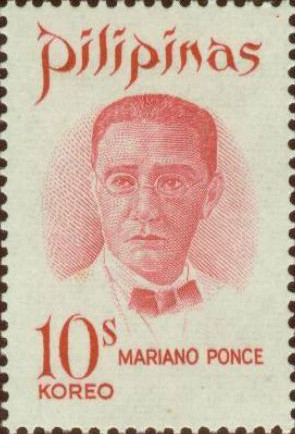
Mariano Ponce y Collantes commonly known as just Mariano Ponce was a Filipino physician, writer, statesman, and active member of the Propaganda Movement. In Spain, he was among the founders of La Solidaridad and Asociación Hispano-Filipino. Among his significant works was Efemerides Filipinas, a column on historical events in the Philippines which appeared in La Oceania Española (1892–1893) and El Ideal (1911–1912). He wrote Ang Wika at Lahi (1917), a discussion on the importance of a national language. He also served as Bulacan's representative to the Philippine Assembly from 1909 to 1912.
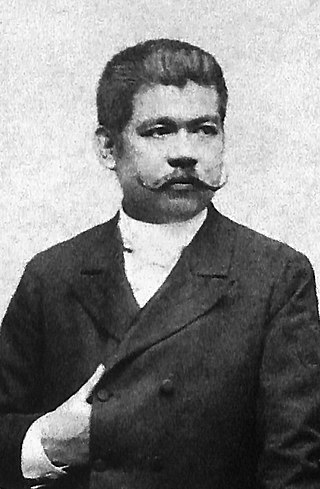
Marcelo Hilario del Pilar y Gatmaitán, commonly known as Marcelo H. del Pilar and also known by his nom de plumePláridel, was a Filipino writer, lawyer, journalist, and freemason. Del Pilar, along with José Rizal and Graciano López Jaena, became known as the leaders of the Reform Movement in Spain.
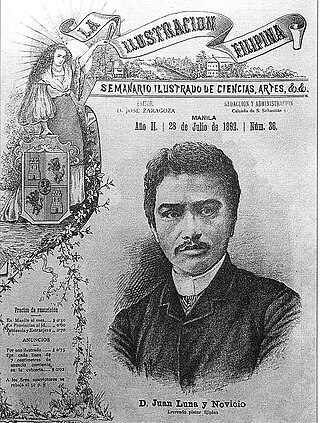
La Ilustración Filipina was a Spanish language newspaper published in Manila, Philippines, that ran during the last decade of the Spanish colonial era, and at times during the Philippine Revolution and the beginning of the 20th century under U.S. rule.

Pablo Ocampo Tecson was an officer in the Revolutionary Army serving under Gen. Gregorio del Pilar and a representative to the Malolos Congress. He was elected the Governor General of Bulacan immediately following the Philippine–American War. Tecson later served as Insular Secretary of the Philippine Bureau of Agriculture.

Jose Ma. Panganiban y Enverga was a Filipino propagandist, linguist, and essayist. He is one of the main writers and contributors for La Solidaridad, writing under the pen names "Jomapa" and "J.M.P."

The 1889–1890 pandemic, often referred to as the "Asiatic flu" or "Russian flu", was a worldwide respiratory viral pandemic. It was the last great pandemic of the 19th century, and is among the deadliest pandemics in history. The pandemic killed about 1 million people out of a world population of about 1.5 billion. The most reported effects of the pandemic took place from October 1889 to December 1890, with recurrences in March to June 1891, November 1891 to June 1892, the northern winter of 1893–1894, and early 1895.

Lopez Jaena Day is a public holiday to celebrate the birth of Philippine national hero Graciano López Jaena. It was declared a holiday by the Philippine National Government only for Iloilo Province and Iloilo City.
Freemasonry or Masonry refers to a civic movement promoting fraternity and good works. Freemasonry defines itself as “a regular system of morality, veiled in allegory and illustrated by symbols.” In particular masonic meetings are characterized by initiations and rituals. As such masonry has been viewed historically by churches and governments as secret societies.
This is the timeline of the Philippine Revolution—the uprising that gave birth to Asia's first republic. The roots of the revolution trace back to the Cavite mutiny and subsequent execution of Gomburza in 1872, and ended with the declaration of independence from Spain in 1898.

Mga kababayang dalaga ng Malolos, also known by its alternative English title To the young women of Malolos, is a letter written by Filipino author and political reformer José Rizal on February 22, 1889. It is written in Tagalog and is addressed to a group of women from Malolos, Bulacan who successfully lobbied the Spanish colonial government to allow them to open a school so that they could study the Spanish language.
